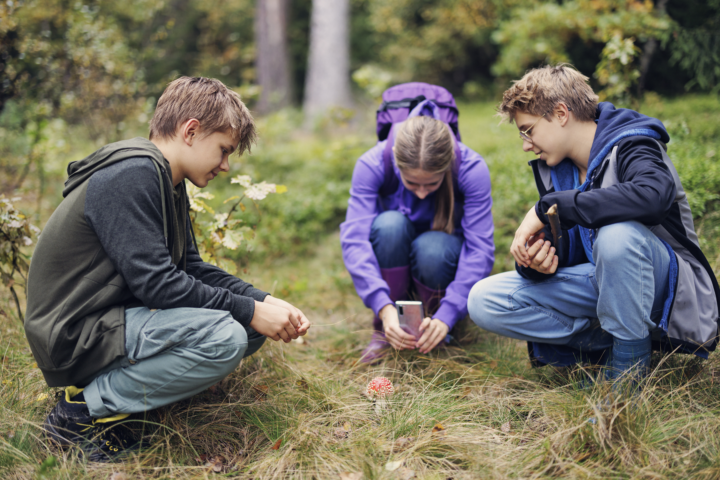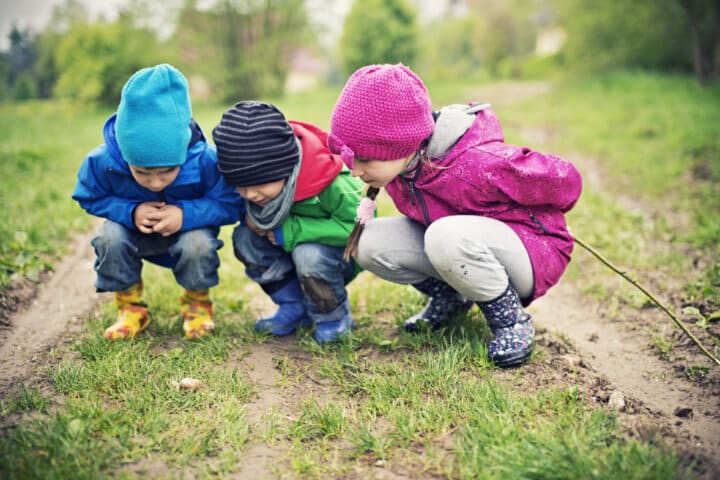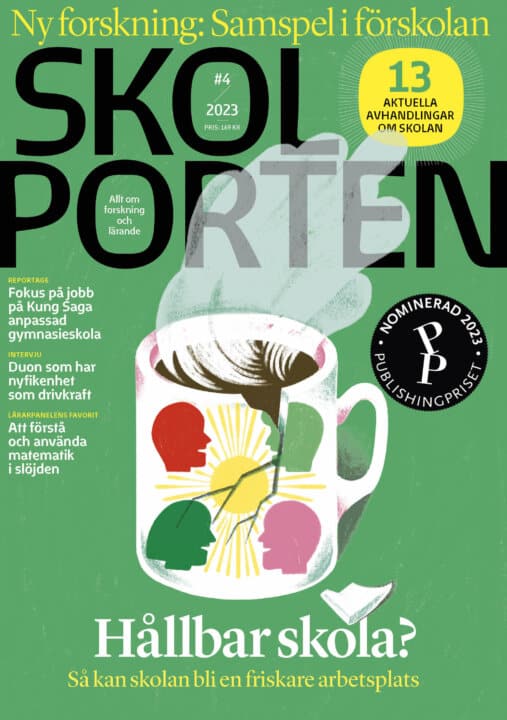Barnlitteraturens tekniklandskap. En didaktisk vandring från Nils Holgersson till Pettson och Findus
Skönlitterära barnböcker skulle kunna fungera bra som utgångspunkter för didaktiska diskussioner om teknikens natur samt dess inverkan på människa, samhälle och natur i såväl nutid som dåtid, visar Cecilia Axells studie.
Cecilia Axell
Lena Kåreland, Uppsala universitet.
Jonas Hallström, Jan-Erik Hagberg
Linköpings universitet
2015-02-20
Barnlitteraturens tekniklandskap. En didaktisk vandring från Nils Holgersson till Pettson och Findus
Technology Landscapes in Children’s Literature : A Didactic Journey from Nils Holgersson to Pettson and Findus
Institutionen för samhälls- och välfärdsstudier, Lärande, Estetik, Naturvetenskap (LEN)
Barnlitteraturens tekniklandskap. En didaktisk vandring från Nils Holgersson till Pettson och Findus
Syftet med denna studie är att utifrån ett didaktiskt perspektiv undersöka budskap om teknik i ett urval svenska skönlitterära barnböcker samt undersöka hur berättelsernas tekniksyner förhåller sig till deras natur- respektive framtidssyn. Analyserna grundar sig på sex svenska författares skönlitterära barnböcker: Selma Lagerlöf, Otto Witt, Elsa Beskow, Karl-Aage Schwartzkopf, Sven Wernström och Sven Nordqvist. Dessa böcker innehåller frågeställningar och problematiker som i dag anses betydelsefulla och relevanta inom teknikens didaktik. Studien har tre analytiska perspektiv: att identifiera tekniken som finns representerad i barnböckerna, att undersöka barnböckernas tekniksyner i förhållande till natur och framtid samt att finna gemensamma och särskiljande teman berättelserna emellan. Analyserna visar att de olika tekniksynerna i barnböckerna är mångfacetterade. Hur tekniken gestaltas kan delas in i sex övergripande teman: tekniken som metafor eller liknelse, som antropomorf, som autonom, som resultat av kreativ drivkraft, männens teknik samt som icke tidsbunden. Det förekommer också olika syn på teknik och dess inverkan på såväl individ som samhälle. Natursynen som dominerar kan beskrivas som svagt antropocentrisk och en majoritet av berättelserna förmedlar bilden av det effektiva framtidssamhället där tekniken löser människans problem. En slutsats är att barnlitteraturens tekniklandskap kan bidra till att både vidga och fördjupa det teknikdidaktiska perspektivet. Det ambivalenta budskapet i böckerna gör att teknikens mångskiftande natur lyfts fram samt problematiseras på ett sätt som läroböcker sällan gör. Skönlitterära barnböcker skulle därför kunna fungera som utgångspunkter för didaktiska diskussioner om teknikens natur samt dess inverkan på människa, samhälle och natur i såväl nutid som dåtid.
Technology Landscapes in Children’s Literature : A Didactic Journey from Nils Holgersson to Pettson and Findus
The aim of this study is to examine, from a didactic perspective, messages conveyed about technology (view of technology) in a selection of Swedish children’s books containing elements of technology education, and to explore how these views of technology relate to nature and futures perspectives. The analysis is based on children’s books by six Swedish authors: Selma Lagerlöf, Otto Witt, Elsa Beskow, Karl-Aage Schwartzkopf, Sven Wernström and Sven Nordqvist. These books contain depictions of technology, but also depict issues and problems relevant in the field of technology education. The study has three analytical perspectives: the identification of technologies represented in the books; interpretation of the views of technology transmitted in the stories in relation to nature and futures perspectives; and identification of shared and divergent themes in the stories. The analysis shows that in general, the books present technology in diverse ways. Various facets of technology appear in the material and these are categorized into six themes: technology as metaphor or analogy; as anthropomorphic; as autonomous; technology as a result of a creative driving force; masculine technology; and technology as enduring. There are also different views of technology and its impact on individuals as well as society. The dominant view of nature in the books is weak anthropocentric and a majority of the stories convey the image of an effective future society in which technology solves human problems. A conclusion is that the technology landscapes in children’s fiction could contribute to broadening technology education. The ambivalent messages in these books reveal technology’s multifaceted nature and its complexity. The messages in children’s literature could also make it possible to problematize the nature of technology in ways that textbooks seldom can. Children’s fiction could thereby be jumping boards for creative discussions about the nature of technology, and technology’s effects on individuals, society and nature in past and present time.
Relaterade länkar

Biologi
 Åk 7–Vux
Åk 7–Vux Hållbar utveckling i förskolan
 Fsk
Fsk 




